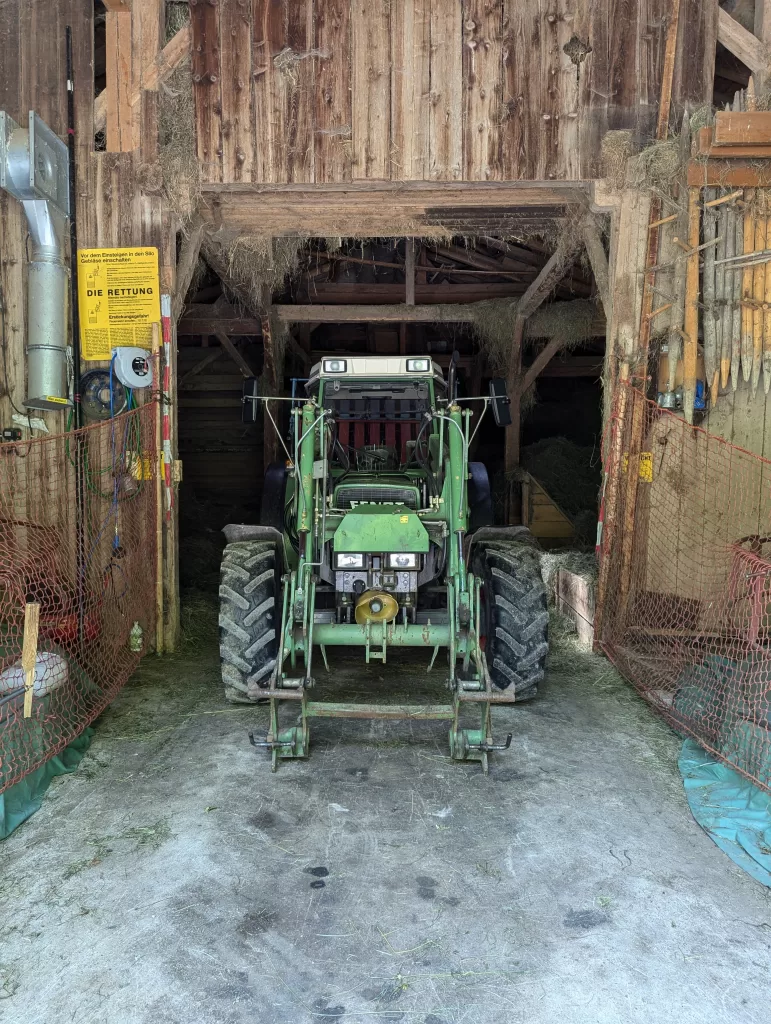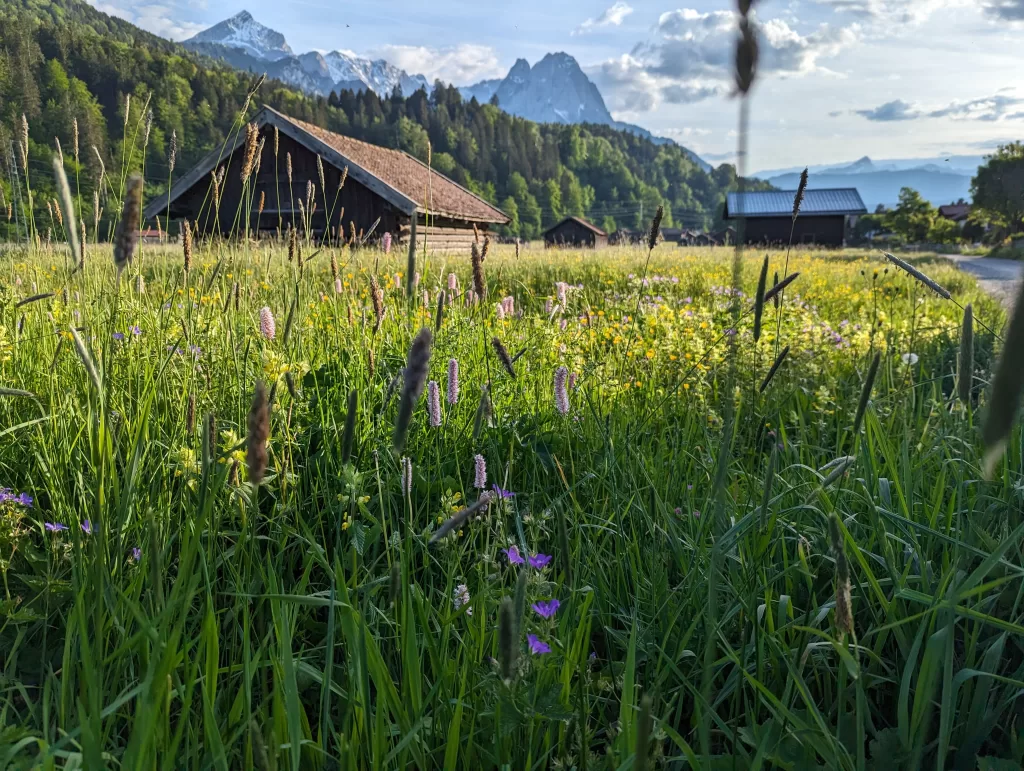
The most common question we receive when friends and family come to visit Garmisch for the first time is “what are all those huts?” The drive from Munich airport south to Garmisch is a beautiful one. Once you break through the Munich traffic, the autobahn opens up. Expansive views of peaceful rolling hills in every direction are a delight for the eyes. This space is mainly used as animal pastures and farmland. If you visit in autumn, you will undoubtedly also see grazing cattle on your journey south. With the jagged lines of the Alps coming into view on the horizon, a few small towns are passed along with a large number of seemingly random wooden huts dotting the pastures. So what are all those wooden structures? Are they still used today or are they a remnant of times past? Let me explain.
The state of Bavaria is home to over 40% of all farms in Germany. Small scale family farming is in Bavaria’s history as well as at the core of modern values. The wooden huts scattered in farm pastures are actually called “Heuschober.” They are small barns commonly used to dry hay. They can also be used by farmers as storage for tools and machinery. Bigger ones can be shelter for animals. The majority are not suitable for living, although some may have a space where farmers could sleep over if they didn’t want to go home after a late evening of work.

Considering the long-standing tradition of farming in the region, some of these barns are over 100 years old. You will observe them in various states of repair. Many are still used, but others are abandoned due to modern transport eliminating much of the need to store supplies in the fields.
Visitors new to the region often say these barn structures stand out as special, notable, or “besonders.” Being jet lagged, recently having arrived in a new country off an overnight flight, you can imagine how one may be confused and wonder what all the huts are for. I have never seen anything similar in the US and the barns aren’t easily missed during a car or train ride. The hay barns are all made of wood, but each is uniquely weathered and surrounded by different landscapes. These nuances are more easily observed in close vicinity. The small differences make the barns like fingerprints, quite interesting (and in my opinion beautiful) to look at.

When you take a close look, you can tell these wooden huts have withstood harsh weather conditions over many years. Some have gaps in the walls, others look sealed enough to spend a winter night in. The uniqueness of the huts is a reflection of the farmers themselves, the struggles they have endured, and the lives they have led. I wish the barn walls could talk so that I could know the stories of the farmers and how things have changed over time. I often think that farm animals in Bavaria must be some of the luckiest animals in the world simply for the fact that their grazing land is stunningly beautiful. Can you imagine being a cow or sheep with plenty of space to roam in a rolling green pasture or alpine meadow? Industrial farming is also limited with strict German laws surrounding the industry. Of course, this is absolutely romanticized because we all know the fate of the animals… and that the life of a farmer is not an easy one. At the end of the day, I am thankful for my sweet animal neighbors and access to local products that reflect high quality.
So yes, these “huts” are just barns or sheds. They aren’t anything fancy. But they reflect long-standing farming traditions and serve as a nod to simpler times past. We have taken many photos while hiking in the region and I am hard pressed to find one without a Heuschober hut in it somewhere. These structures do initially seem out of place in the landscape but are integral to the lifestyle and the tradition. If you ever visit southern Germany or Austria, I hope you take a closer look at these huts and allow their beauty to stand out as much as the mountain landscapes they are a part of.

